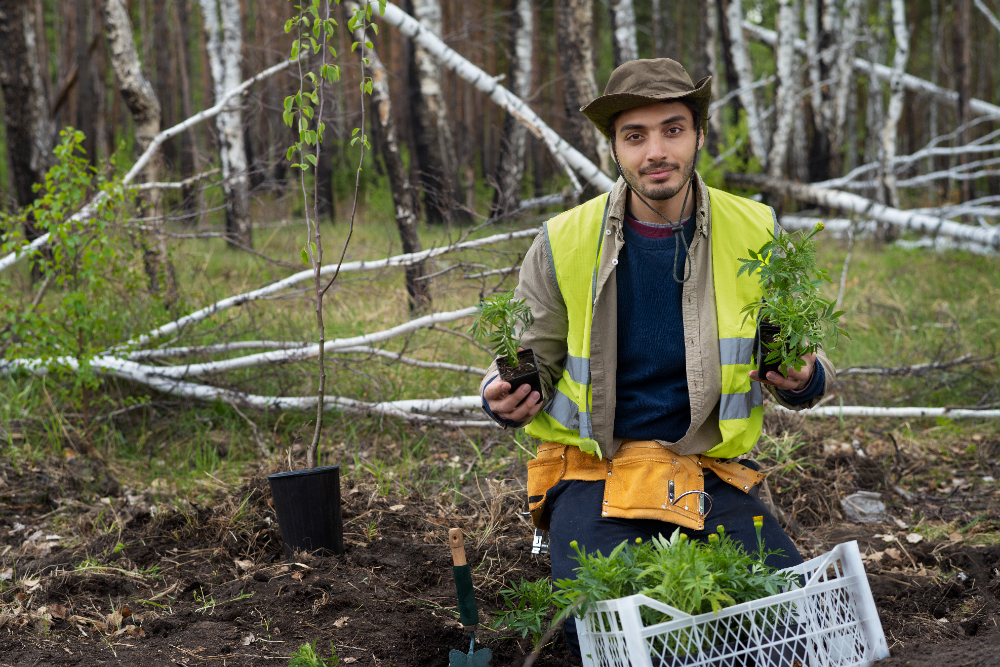A tree arborist, often referred to as an arboriculturist, is a professional who specializes in the care and maintenance of trees. Their expertise extends beyond simple tree trimming; they have a profound understanding of tree biology, health, and structure. Arborists are trained to assess the condition of trees and provide advice and solutions for their care and maintenance. This comprehensive approach ensures that trees are not only aesthetically pleasing but also structurally sound and healthy.
The Role of a Tree Arborist
Tree arborists perform a variety of tasks that contribute to tree health and safety. Their primary responsibilities include:
- Tree Health Assessment: Arborists evaluate the overall health of trees, identifying signs of disease, pest infestations, or structural issues. This assessment is critical in preventing potential problems before they become severe, ensuring the tree’s longevity and vitality.
- Pruning and Trimming: They conduct precise pruning and trimming to promote healthy growth and remove dead or hazardous branches. Proper pruning techniques are essential to maintain the tree’s natural shape and encourage robust health.
- Tree Planting: Arborists advise on the proper species and planting techniques suitable for specific environments and conditions. Their knowledge ensures that new trees are planted in a way that maximizes their growth potential and minimizes future issues.
- Disease and Pest Management: They diagnose and treat tree diseases and pests, recommending preventative measures and treatments. This proactive approach helps safeguard trees against common threats that could compromise their health.
- Risk Assessment: Arborists assess the potential risks that trees may pose to people or property, providing recommendations for mitigation. This includes evaluating the likelihood of branch failure or tree collapse, particularly in storm-prone areas.
Why Hire a Tree Arborist?
Hiring a tree arborist is essential when you need expert advice on tree health or when complex tree care is required. Their expertise ensures that your trees receive the best possible care, reducing the risk of damage or disease. Arborists can provide tailored solutions that address specific problems, enhancing the overall health and safety of your trees. By engaging an arborist, you can also increase the aesthetic and monetary value of your property, as well-maintained trees are a significant asset.
What is a Tree Pruning Service?
A tree pruning service focuses on the cutting and removal of specific tree branches to improve tree health, appearance, or safety. Pruning services are typically less comprehensive than the services provided by a tree arborist. They are often engaged for routine maintenance tasks that ensure trees remain attractive and do not pose immediate safety concerns.
The Role of a Tree Pruning Service
Tree pruning services primarily involve:
- Branch Removal: Cutting and removing specific branches that are dead, diseased, or pose a safety risk. This task is crucial in preventing decay and disease from spreading to other parts of the tree.
- Shape and Appearance: Enhancing the aesthetic appeal of trees by shaping them appropriately. Pruning can transform a tree’s appearance, making it a more visually pleasing part of the landscape.
- Light and Air Penetration: Allowing more light and air to reach the tree canopy and surrounding landscape by thinning dense areas. This process promotes healthier growth and can improve the conditions for plants growing beneath the tree.
Why Use a Tree Pruning Service?
A tree pruning service is ideal for routine maintenance and when specific branches need removal to enhance tree health or appearance. Regular pruning can prevent potential hazards and promote healthier growth. By maintaining a consistent pruning schedule, property owners can ensure their trees remain vibrant and free from overgrowth issues. Additionally, pruning can improve the structural integrity of trees, making them less susceptible to storm damage.
Key Differences Between Tree Arborists and Tree Pruning Services
by Fabrice Villard (https://unsplash.com/@fabulu75)
Understanding the key differences between tree arborists and tree pruning services can help you make informed decisions about tree care. Recognizing these distinctions ensures that you engage the appropriate professional for your tree’s specific needs, leading to more effective and efficient care.
Expertise and Training
- Tree Arborist: Arborists undergo extensive training and certification, gaining in-depth knowledge of tree biology, diseases, and treatment methods. They are equipped to handle complex tree issues and provide comprehensive care. This rigorous training ensures arborists are well-versed in the latest techniques and best practices in tree care.
- Tree Pruning Service: Pruning services may not require the same level of specialized training as arborists. While they are skilled in pruning techniques, their focus is primarily on maintenance rather than diagnosis and treatment. This makes them suitable for tasks that do not involve complex tree health issues.
Scope of Services
- Tree Arborist: Offers a wide range of services, including health assessment, disease management, planting advice, and risk assessment. They provide holistic tree care solutions that address both immediate and long-term tree health needs.
- Tree Pruning Service: Focuses on branch removal and maintenance tasks. Their scope is more limited to enhancing tree aesthetics and safety. This makes them ideal for regular upkeep rather than addressing intricate tree health issues.
Situations to Hire Each Service
- Tree Arborist: Hire an arborist when dealing with diseased trees, complex tree issues, or when you need expert advice on tree health and planting. They are the go-to professionals for comprehensive tree care and management solutions.
- Tree Pruning Service: Opt for a pruning service for regular maintenance, shaping, or when specific branches need removal to improve tree health or appearance. Their services are ideal for maintaining the aesthetic and structural integrity of your trees.
Making the Right Choice for Your Tree Care Needs
Choosing between a tree arborist and a tree pruning service depends on your specific tree care needs. If your trees are generally healthy and just need routine pruning, a tree pruning service may suffice. However, if your trees are showing signs of distress, need a health assessment, or require comprehensive care, a tree arborist is the right choice. By understanding the specific roles and expertise each service offers, you can ensure your trees receive the appropriate care.
Factors to Consider
- Tree Condition: Consider the current health and condition of your trees. Are there visible signs of disease or distress? If so, consulting an arborist is advisable to address these issues effectively.
- Complexity of Care: Determine whether your tree care needs are simple or if they require specialized knowledge and treatment. This will guide you in choosing between a pruning service or an arborist.
- Future Tree Goals: Think about your long-term goals for your trees. Do you need advice on planting new trees or managing existing ones? Arborists can provide valuable insights for future planning and planting strategies.
Conclusion
In conclusion, both tree arborists and tree pruning services play essential roles in maintaining the health and beauty of trees. Understanding the differences between these services enables you to make informed decisions about tree care. By selecting the right service for your needs, you can ensure your trees thrive and contribute to the overall landscape aesthetic and ecological balance. Each service, with its unique expertise, addresses specific aspects of tree care, ensuring your trees remain healthy and vibrant.
By prioritizing proper tree care, you invest in the long-term health and safety of your trees, enhancing the beauty and value of your property. Whether you choose a tree arborist for comprehensive care or a pruning service for regular maintenance, your trees will thank you for the attention they receive. Well-maintained trees not only improve the visual appeal of your property but also support local biodiversity and provide environmental benefits.


